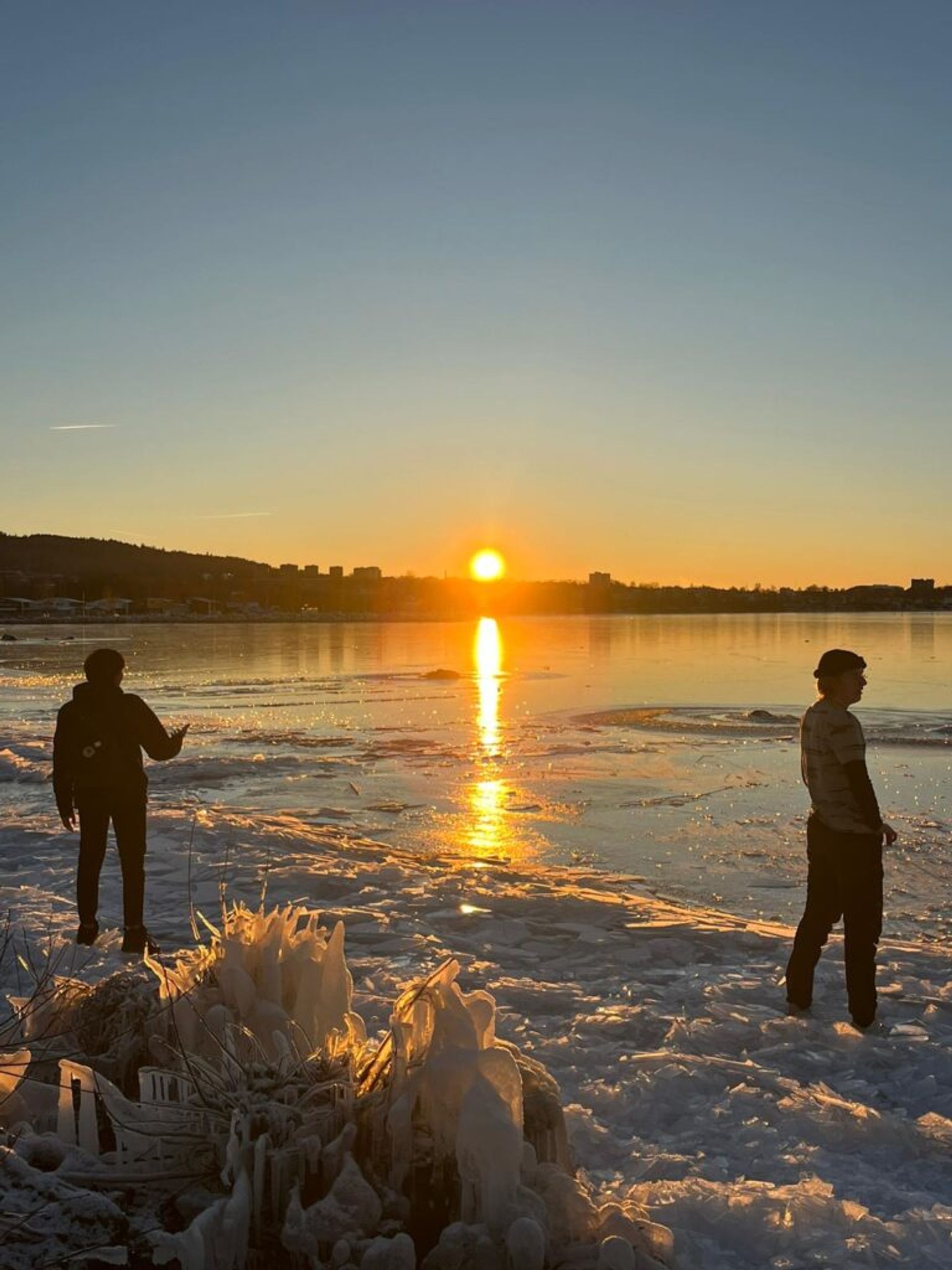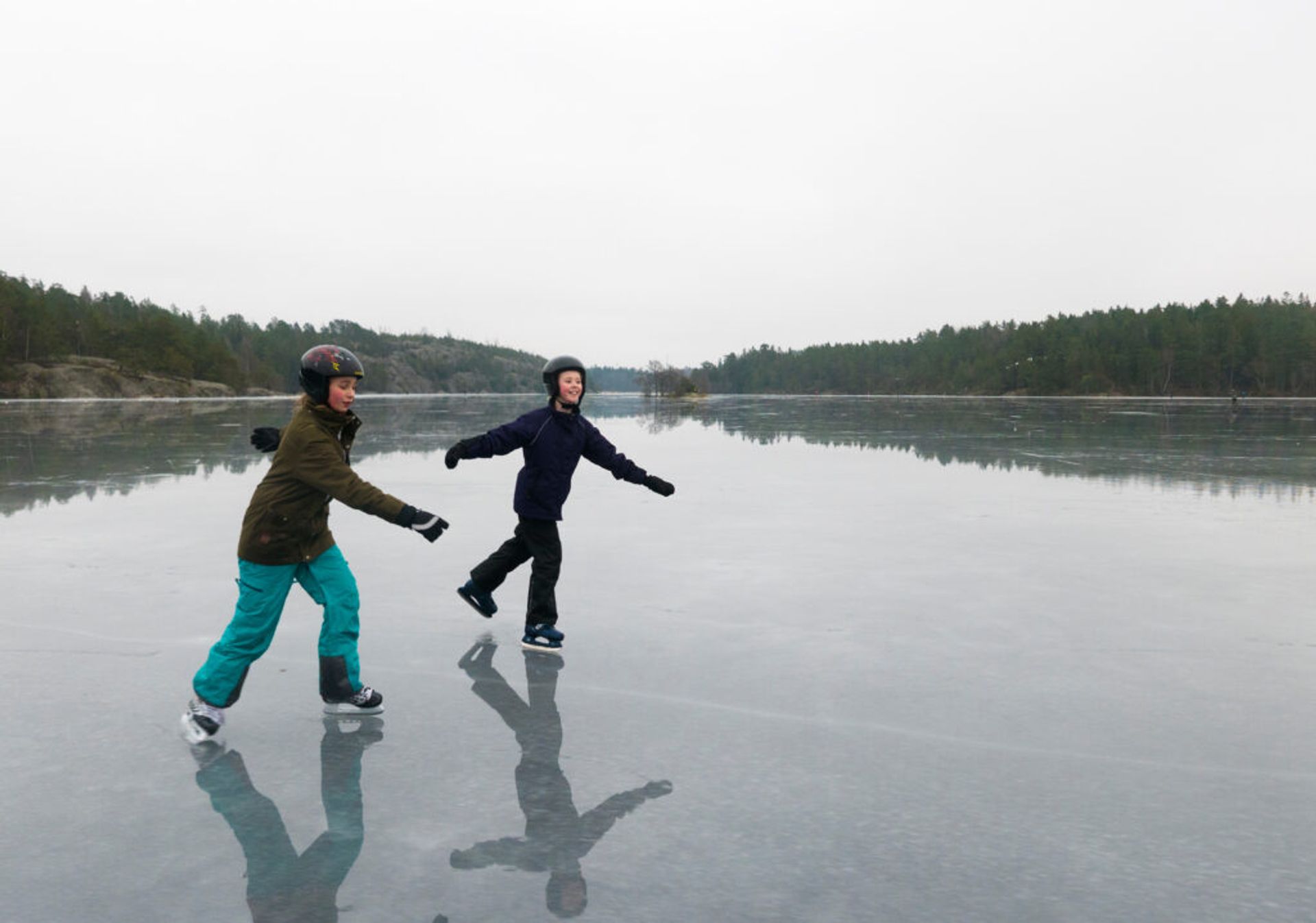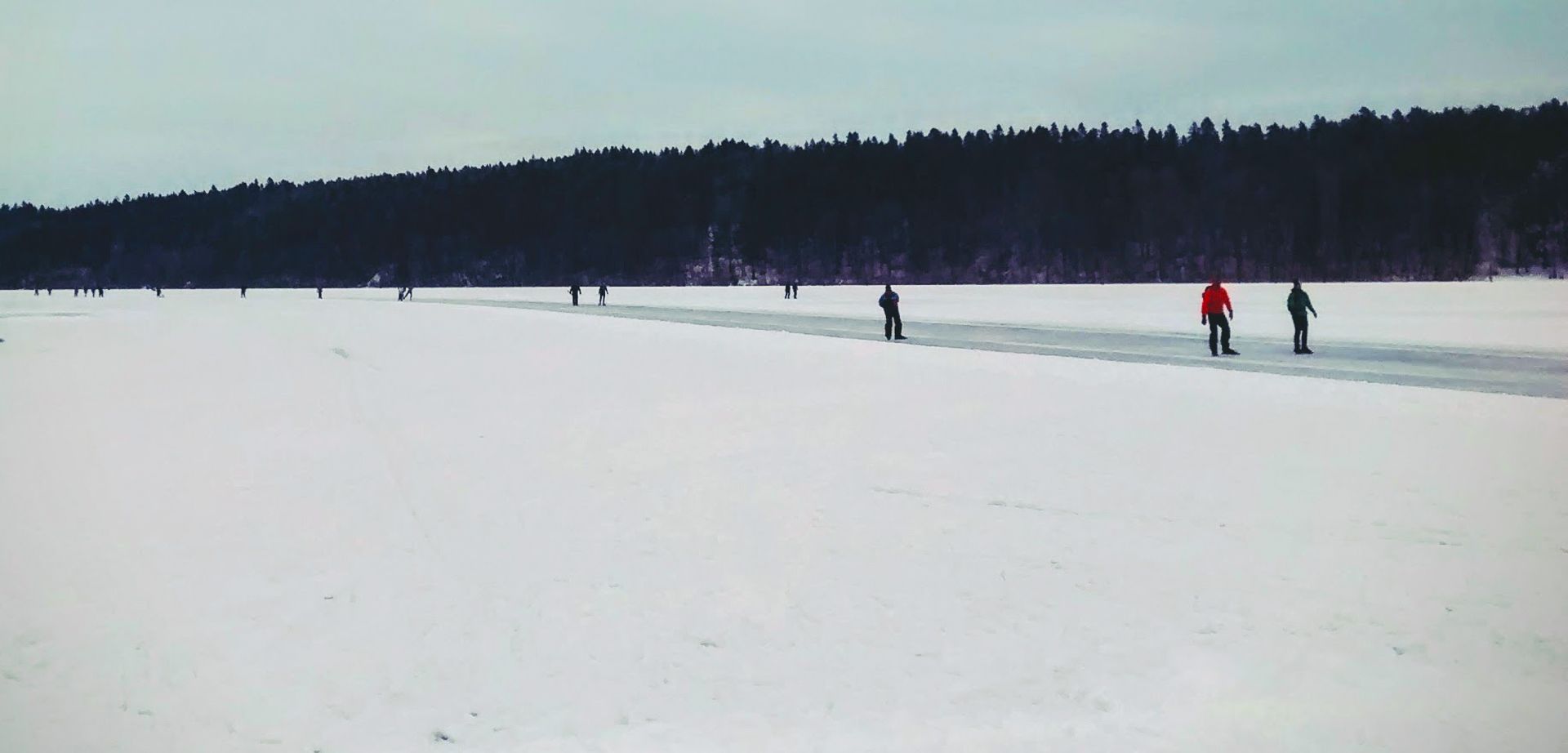
Written by Nana
22 Jan 2024
Welcome to another cool (literally!) blog post on Study in Sweden. Today, we’re going to tackle a skill that’s as essential as knowing your way around winter – figuring out if that picturesque lake you’ve been eyeing is frozen enough for a winter stroll.
I gather information long and wide, from my local friends, then from Bear Grylls, to guides from Swedish and Europe Life Saving Society, so I hope this will unlock your dream and curiosity to walk on water like Naruto (hehe weeaboo detected 🤭). Let’s get straight to the ice!
Going out alone? Nej, tack (no, thanks)🙅🏼
Bring a friend out on the ice with you. If anything occurs, such as the ice cracks, having someone who is not in the water with you will make a huge difference. Also, notify someone on land where you are heading. Be specific – tell them where you intend to enter and stroll around the lake, as well as what time you intend to return.
Check for clear ice🧊
The ideal ice will be clear, blue, or black and hard, with no snow on top. If you can kick it up like a snowcone, or if the ice seems hazy and gray, then don’t risk it, it’s a no-no. The Swedish Life Saving Society said solid ice for walking is at least 10 centimeters thick (but this is so hard to measure without tools, I know)

Avoid sloppy or snow-covered ice🌨️
Snow on the surface is a warning indication that the ice may be weakened since snow insulates ice and keeps it from thickening. Slush falling off the top of the ice when you kick at it is another indication. It means that the ice is melting.
Check with the locals👯
Make no assumptions if you are from “out of town.” Stop by the grocery store, local shop, or even a police or fire station to ask questions about recognized danger places and safer spots in the neighborhood. I’m sure they would rather assist you than have to pull you out later~
Observe the coastline🏖️
Whenever it rains and gets sunny, the coastline is frequently where the ice deteriorates or melts first. The snowmelt falling down the slopes will eventually melt the ice surrounding a lake. That’s not to say if the shoreline is eaten away at, the ice is compromised. But, it’s a sign that the area has lately had warmer weather.

In Sverige Radio’s interview with Mikael Olausson from the Swedish Life Saving Society, he says people need the right equipment, knowledge and experience before venturing out. He also points out some tips on what to carry around and gear up!
1. Ice claw or ice picks, put it around your neck, to help you crawl back from the water if you fall.
2. A waterproof backpack for buoyancy
3. Wam clothes and a mobile phone in a watertight container
4. A spud bar. A long steel with a chisel tip on the end to test the ice’s firmness. How to use: You walk out, slam the chisel point into the ice and, if nothing happens, walk a few steps forward and slam it in again out in front of you.
Read the ice safety guide from International Life Saving Federation of Europe
Read the ice safety guide from Sverige Radio
Last but not least! To be extra extra safe, for those interested in walking, skating or skiing on the ice, you should join a winter sports club to learn more and practice safety techniques.

Walking on ice is never 100% secure, so safety is the best policy. If you’re unsure just stay off the ice and try again when it’s the right condition. And also, it is important to check all of the signs above before deciding to walk on the ice because it does not mean that the lake is completely frozen just because you see other people walking on it~ Stay warm and dry in this frosty season, friends! ❄️





